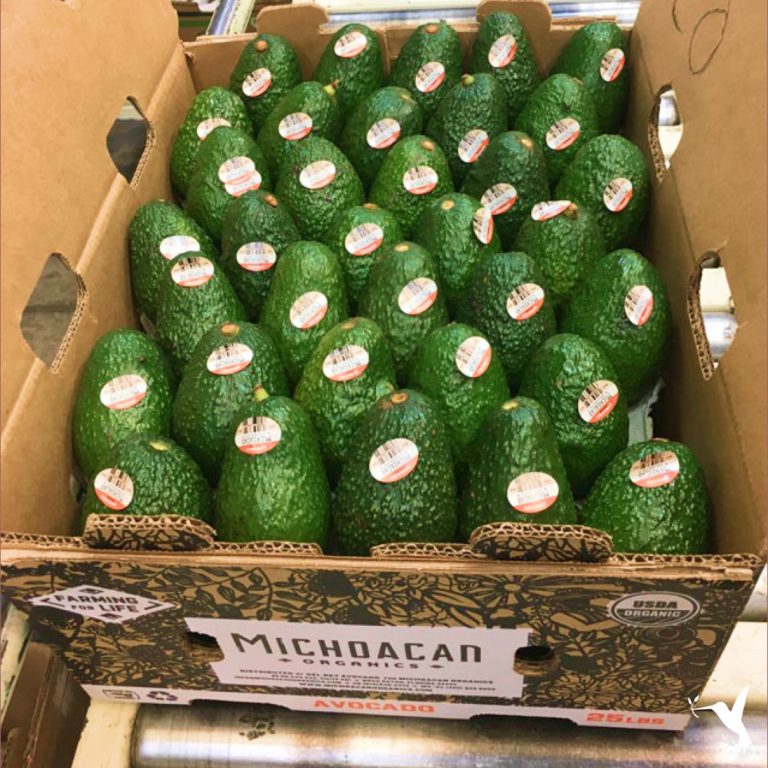Evolving Agricultural Value Chains
The Future is Now

What is an Agricultural Value Chain?
Who planted the first tomato seed? Trimmed the plant? Who harvested the fruit? Packed it on the truck? Drove the truck? Unloaded at the supermarket? A lot of humans and energy may have been involved in each product that we consume. This is the value chain. An agricultural value chain is the chain of the people and activities that bring an agricultural product, like a tomato, from inputs and production in the field all the way to the consumer. The chain includes stages such as processing, packaging, and distribution.
The Beginning of Agricultural Value Chains
Founded in the early 17th century, the Dutch East India Company established itself as the first international conglomerate dedicated to the trading of agricultural products. With their development of value chain infrastructure and logistics, they began the evolution of agricultural value chains.
The Dutch East India Company sold shares so that small investors in the Netherlands could own part of the company’s success. It was perhaps the first corporation to list on a stock exchange. The company revolutionized the way business was structured. In addition, they reimagined the global trade of agricultural products.
Commerce and capitalism would never be the same.
At Producers Market, we envision another great evolution in the way business is done. Our vision goes beyond a new approach to agricultural trade. We seen an evolution of capitalism itself. We believe in having the foresight to integrate necessary changes at every level of this evolution—before it takes hold.
The future is present. Producers Market is building this change from the ground up. We plan to adapt to the shifts ahead.
We are grateful for the shared vision of our global investor network. They have empowered our team to make this vision a reality.
At Producers Market, we are working toward many innovations across the agricultural industry. These include business models, technology, and the value chain.
- Value Chain Ownership for Agricultural Producers. We place 20% of our corporate equity into a reserve. Over time, we will issue this to the farmers and farmworkers who regularly use our platform.
- Supply Chain Brand. Our design hinges on storytelling—in both data and content. We want consumers to learn about the products and who produced it. We have created our brand to support authentic storytelling.
- CPG Profitability Sharing. In addition to co-ownership of the Producers Market consumer brand, we provide transparent details of the sales of the products sold under it.
- Data Integrity. We value clear communication. Participants can opt into sharing data with full traceability as to how we use data. We use data to create more efficient supply chains. We aim to empower agricultural producers with access to financial resources.
- Transparent Market Access. By turning on the lightbulbs to view the entirety of the supply chain and all available marketing channels, we hope to shift supply power to agricultural producers. True transparency could ultimately maximize profitability on all outputs of all grades, and reduce waste streams.
- From Generalization to Agent-Specific. With improved data resources and user ratings systems across the value chain, wholesale buyers, agricultural producers and service providers alike could better make strategic business decisions.
- Consumer Investment in Supply Chains. Producers Market envisions an ecosystem that allows consumers to invest in farmers. Consumers could easily invest into the producers they align with and the natural resources they believe are valuable.
- Tip Your Farmer. We envision technology that enables consumers to gift or tip their farmer and farm workers for a job well done.
Uniting Farming Communities With Our Brand
Each day we gain a greater understanding of the future of value chain technology. Every day we see its potential to empower farmers. For hundreds of years (if not more) buyers have dominated the value chain. Agricultural producers have had to constantly compete to make the sale to the market.
With continued population growth and increasing consumer demand for specialty categories like organic and fair-trade, we can now establish a value chain in which buyers begin to compete over limited producer outputs. This will result in more secure future contracts and better payment terms for farmers.
Producers Markets’ ability to unite the farming communities on the platform further organizes this producer power, helping to enable a much-needed shift in how profits are distributed across the supply chain.
We are beyond excited every day as another piece of the puzzle comes together in the Producers Market ecosystem. We continue to see Producers Market as a consumer brand driven by tech. The B2B marketplace and digital technology toolkit are essential parts of our roadmap. We are in the process of developing the Producers Market brand, which will tell the story of the producer of a given product—with a transparent, shared profitability model. The brand will be distributed through our own e-commerce site and wholesale distribution networks to retailers globally.
The Role of Aggregators
Producers Market prides itself on being a global leader in bringing true digital and transactional decentralization into the real world with our work in the agricultural value chain. Central to our business model is building relationships with “aggregators.”
We define aggregators as the groups that organize small farmers and facilitate the process of certification, logistics, and sales to commercial markets. Aggregators can take the form of associations, cooperatives, packing facilities, and processing facilities.
Our Producers Market platform and technology is most applicable to groups with the capability to organize internally and prepare themselves to fulfill the needs of the buying community. Often this means aggregating the scale to reach a pallet or container, managing relevant certifications, and negotiating with distributors, retailers and other larger-scale buyers.
Our vision is to focus our energy on building the technology around our marketplace, digital marketing, databasing, distributed ledgers, and app user interface designs—without getting too caught up in the micromanagement of helping farmers get “export ready.” Aggregators often already manage these activities, and small farmers often have access to government services, non-profit services, and consulting services in order to get themselves properly organized to present to domestic and global buying communities. While we plan to list these resources, we prefer to keep our systems efficient and focused in order to maintain our disruptive transaction cost fee of 0.5%.
In comparison to other initiatives in this space, we are focused on building the user base to create transactions. We plan to capture, organize and leverage that data to empower our accounts receivables financing tools.
Closing Thoughts
As we dive deeper into who we are as a company, we are getting to know our essence in incredible detail, better understanding exactly how we will be disrupting the $4 Trillion agricultural value chain.
Our team is focused on building a digital ecosystem of the marketplace, finance, and transaction. We are achieving this ecosystem through a partnership-driven approach in which we continually ask ourselves, should we build this?
The key frameworks within our wheelhouse are digital marketing, smart contracts, and transactions, along with their integration into our greater marketplace application. It has been an incredible 2019 so far, and we continue to move our vision forward every day.


